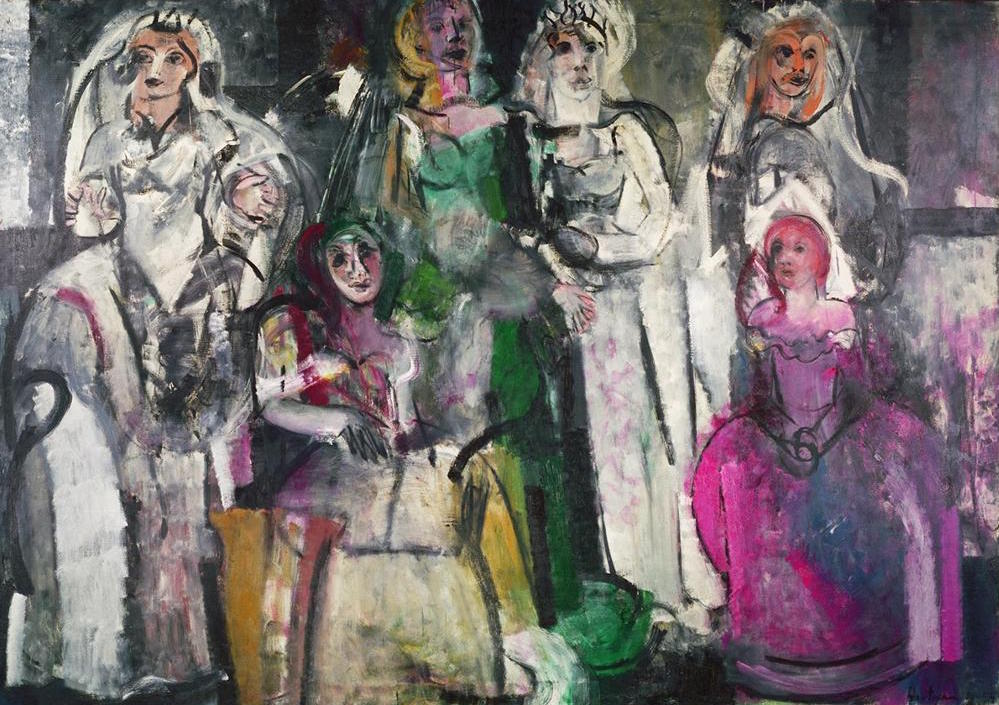Opinion
Grace Hartigan Kills Off an AbEx Cliché
THE DAILY PIC: At the Whitney, Hartigan's 'Brides' proves that abstraction wasn't the only game in town in 1950s New York.

THE DAILY PIC: At the Whitney, Hartigan's 'Brides' proves that abstraction wasn't the only game in town in 1950s New York.

Blake Gopnik

THE DAILY PIC (#1772): “The 1950s were the decade of Abstract Expressionism, when figuration was left out in the cold”—that’s one of those art-historical clichés that refuses to die even though it’s almost completely inaccurate. Its wrongness was brought home to me, for the umpteenth time, when I saw this wonderful 1954 painting by Grace Hartigan, titled Grand Street Brides, in the “Human Interest” show from the Whitney Museum’s permanent collection.
It’s not as though Hartigan was the sole serious painter in America who made pictures of people and things. De Kooning, supposedly one of the giants of AbEx, always kept to the “Ex” part of that title but often left off the “Ab”. He had begun his great “Woman” series not long after Abstract Expressionism took off.
Looking through art writing from the late 1940s, when AbEx was a-borning, I came across as many discussions of how figuration was taking over from abstraction as the other way around. Balcomb Greene, a friend of de Kooning (and Andy Warhol’s favorite art-school teacher) had been one of abstract art’s greatest defenders in the 1930s, but by 1947 even he was in the press for having gone over to pictures of people. Look at any month’s worth of New York Times art reviews from the 1950s, and there are at least as many shows of representational art as of abstraction.
Is there some kind of stake that can be driven through the heart of clichés, to kill them off for good? If so, I’ll take a gross. (Copyright the Estate of Grace Hartigan)
For a full survey of past Daily Pics visit blakegopnik.com/archive.